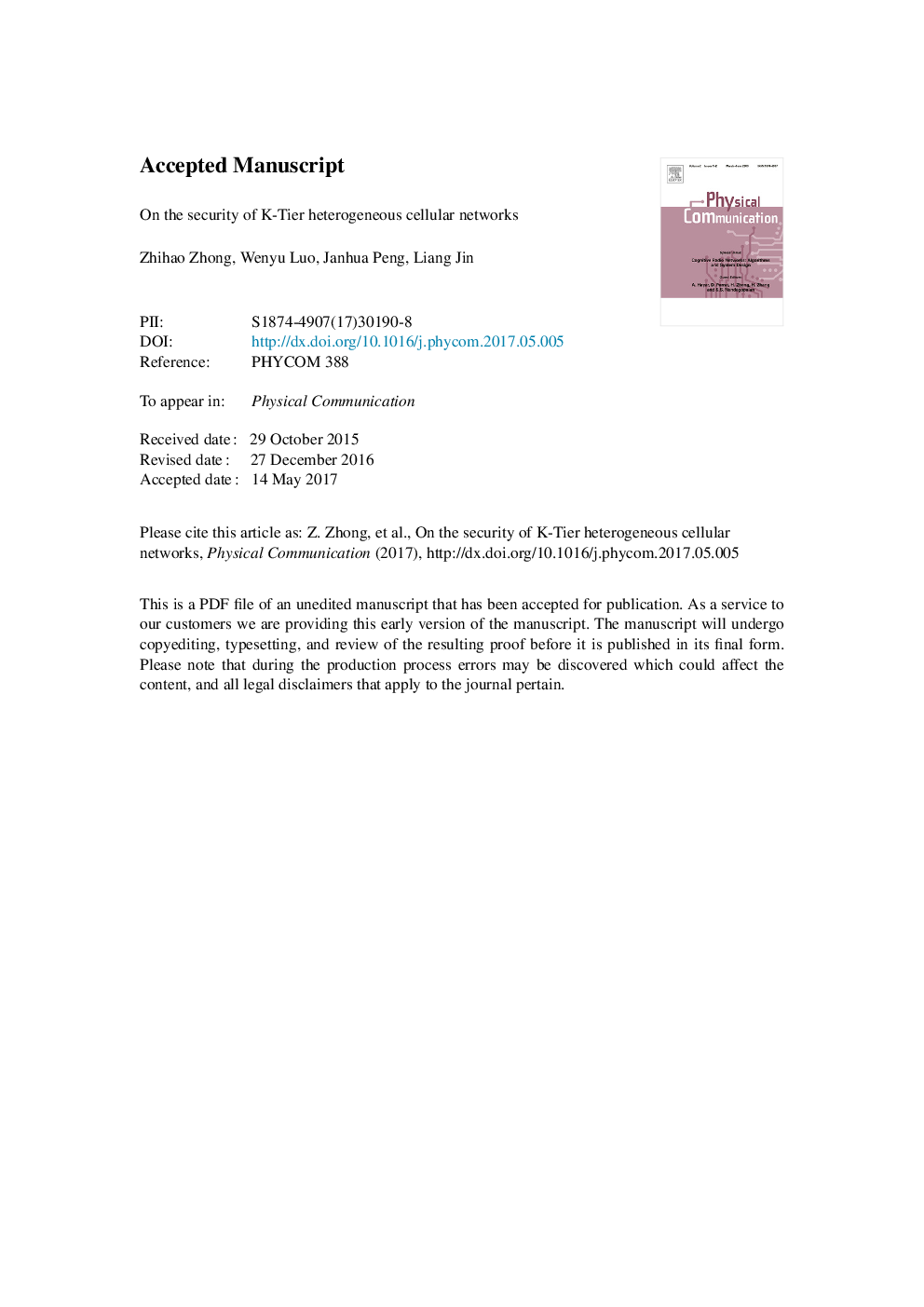| Article ID | Journal | Published Year | Pages | File Type |
|---|---|---|---|---|
| 6889334 | Physical Communication | 2017 | 22 Pages |
Abstract
Motivated by recent developments in heterogeneous cellular networks and physical-layer security, we aim to characterize the fundamental limits of secure communication in networks. Based on a general model in which both transmitters and receivers are randomly scattered in space, we model the locations of K-tier base stations, users, and potential eavesdroppers as independent two-dimensional Poisson point processes. Using the proposed model, we analyze the achievable secrecy rates for an arbitrarily located mobile user. Assuming that the cell selection is based on achievable-secrecy-rate threshold, we obtain approximations for: (a) secrecy coverage probability and (b) average secrecy load per tier. We also investigate how the network performance is affected by secrecy rate threshold, eavesdropper density, and different access strategies are analyzed, respectively. Finally, our theoretical claims are confirmed by the numerical results.
Related Topics
Physical Sciences and Engineering
Computer Science
Computer Networks and Communications
Authors
Zhihao Zhong, Wenyu Luo, Jianhua Peng, Liang Jin,
